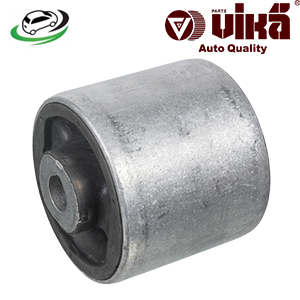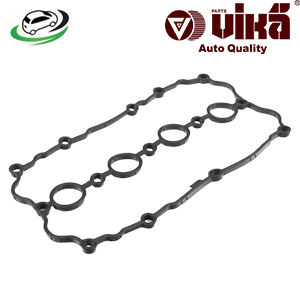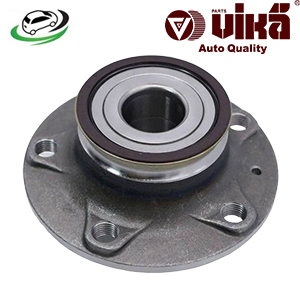-36%
Get Rear Wheel Hub Bearing (Complete Hub) Audi A3/Q2 / Volkswagen Golf/Jetta VI 1K0598611
The wheel hub bearing is a crucial component of a vehicle’s suspension and drivetrain system. It allows the wheels to rotate smoothly and efficiently while supporting the weight of the vehicle. Here’s an in-depth look at the construction, function, benefits, common issues, and maintenance of wheel hub bearings.
Construction and Function of a Wheel Hub Bearing
Construction:
- Bearing Assembly:
- Inner and Outer Races: These are the concentric rings that form the bearing’s races. They provide the surface against which the rolling elements move.
- Rolling Elements: Typically ball bearings or tapered roller bearings that reduce friction and allow smooth rotation.
- Cage: Holds the rolling elements in place and ensures they are evenly spaced.
- Hub Assembly:
- Hub: The central part of the assembly that the wheel mounts onto. It’s often made from cast iron or aluminum for strength and durability.
- Seals: Prevent dirt, moisture, and contaminants from entering the bearing and causing damage.
- Flange:
- Mounting Flange: The part of the hub bearing that attaches to the vehicle’s suspension and brake components. It often has bolt holes for securing the wheel and brake components.
- ABS Sensor Ring (if applicable):
- Sensor Ring: Some wheel hub bearings have an integrated ABS sensor ring that provides wheel speed data to the Anti-lock Braking System (ABS) and other vehicle systems.
Function:
- Wheel Rotation:
- Support and Rotation: The wheel hub bearing supports the weight of the vehicle and allows the wheels to rotate smoothly. It enables the wheels to turn with minimal friction and resistance.
- Load Bearing:
- Weight Support: Bears the weight of the vehicle and any additional loads, including passengers and cargo, distributing the weight evenly across the suspension system.
- Alignment and Stability:
- Wheel Alignment: Helps maintain proper wheel alignment, which is crucial for vehicle handling and stability.
- Driving Stability: Ensures the wheels are properly aligned with the vehicle’s chassis, contributing to stable driving and handling.
- Noise Reduction:
- Smooth Operation: Reduces noise and vibrations generated by the rotation of the wheels, contributing to a quieter and more comfortable ride.
Benefits of a Wheel Hub Bearing
- Smooth Wheel Rotation:
- Reduced Friction: Allows the wheels to rotate with minimal friction, which improves fuel efficiency and overall driving performance.
- Enhanced Driving Experience: Provides a smooth and quiet ride by minimizing noise and vibrations.
- Improved Vehicle Handling:
- Stable Steering: Maintains proper wheel alignment and contributes to stable steering and handling.
- Enhanced Control: Helps ensure that the wheels track correctly and respond accurately to steering inputs.
- Increased Safety:
- Reliable Performance: Ensures that the wheels are securely mounted and rotate smoothly, which is critical for safe driving.
- Load Bearing: Effectively supports the weight of the vehicle and any additional loads, contributing to overall vehicle stability.
- Reduced Maintenance:
- Durable Design: Modern wheel hub bearings are designed for durability and require minimal maintenance compared to older bearing designs.
- Sealed Bearings: Many wheel hub bearings are sealed, which helps protect them from contaminants and reduces the need for regular lubrication.
- Long-Term Reliability:
- Robust Construction: Built to withstand the rigors of daily driving and various road conditions, offering long-term reliability and performance.
- Integrated Design: Many modern wheel hub bearings come as an integrated unit with ABS sensors, reducing the number of components and simplifying installation.
Common Issues with Wheel Hub Bearings
- Wear and Tear:
- Bearing Wear: Over time, the rolling elements and races can wear out, leading to increased friction and noise.
- Seal Degradation: Seals can deteriorate, allowing contaminants to enter the bearing and cause damage.
- Noise:
- Growling or Grinding: Worn or damaged bearings can produce a growling, grinding, or humming noise, especially at higher speeds or during turns.
- Whining Sound: A whining sound may indicate early-stage bearing wear or an imbalance.
- Vibration:
- Uneven Vibration: Worn bearings can cause uneven vibrations felt through the steering wheel or vehicle floor.
- Handling Issues: Excessive vibration can affect vehicle handling and steering precision.
- Play or Looseness:
- Excessive Play: Loose or worn bearings can create excessive play in the wheel, which can be felt as a clunking or thumping noise during driving.
- Alignment Problems: Looseness can lead to wheel alignment issues, affecting driving stability and tire wear.
- ABS Sensor Issues (if applicable):
- Sensor Failure: If the wheel hub bearing includes an ABS sensor, failure or malfunction of the sensor can affect the ABS system and cause warning lights to appear on the dashboard.
Signs of a Failing Wheel Hub Bearing
- Unusual Noises:
- Grinding or Growling: A grinding or growling noise coming from the wheel area, especially during acceleration or turning, can indicate a failing bearing.
- Humming Sounds: A constant humming or droning noise at certain speeds may suggest bearing wear.
- Vibration:
- Steering Wheel Vibration: Excessive vibration or shaking in the steering wheel can be a sign of a worn or damaged wheel hub bearing.
- Vehicle Vibration: Vibration felt through the vehicle’s floor or seats may also indicate bearing issues.
- Handling Problems:
- Steering Issues: Difficulty steering, or a noticeable change in steering response, can be related to a failing wheel hub bearing.
- Wandering or Pulling: The vehicle may pull to one side or exhibit handling instability due to bearing wear.
- ABS Warning Light:
- Dashboard Indicator: If the vehicle’s ABS warning light illuminates, it may indicate a problem with the ABS sensor in the wheel hub bearing or the bearing itself.
- Play in the Wheel:
- Loose Wheel: A noticeable play or looseness in the wheel, which can be felt by rocking the wheel back and forth, may signal bearing failure.
Maintenance and Replacement of Wheel Hub Bearings
- Regular Inspections:
- Visual Checks: Periodically inspect the wheel hub bearings for signs of damage, corrosion, or leaks. Check for any unusual noises or vibrations during driving.
- Brake and Suspension Checks: During routine brake and suspension maintenance, have the wheel hub bearings inspected for wear and tear.
- Timely Replacement:
- Replace Worn Bearings: If signs of bearing failure are detected, replace the wheel hub bearing promptly to prevent further damage and ensure safe driving.
- Use Quality Parts: Opt for OEM or high-quality aftermarket bearings to ensure proper fit and performance.
- Proper Installation:
- Alignment and Torque: Ensure proper alignment and torque specifications during installation to prevent future issues.
- Bearing Preload: Set the correct bearing preload to avoid excessive wear and ensure smooth operation.
- Maintenance of Related Components:
- Check Seals and Gaskets: Ensure that seals and gaskets around the wheel hub bearing are in good condition and replace them if necessary to prevent contaminants from entering the bearing.
- Inspect Suspension and Steering Components: Regularly check suspension and steering components for wear that may affect the wheel hub bearings.
Follow us on Facebook for more parts.



